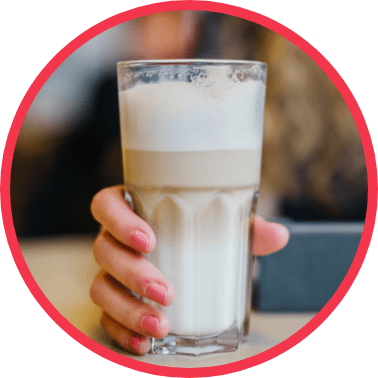If you feel like there’s a new beverage with new flavors, benefits, and ingredients popping up on the shelves of your local store every day—you’re not alone. With the global beverage market being valued just shy of $240 billion last year, and expected to expand at a rate of 13.7% by 20301, brands have been rapidly innovating their beverage offerings to meet consumer demands of all kinds. From fruit-focused functionality to pre- and post-biotic benefits, your customers want beverages that meet all their needs while delivering a broad range of unique flavor combinations.
We spoke with Ren Feng, APAC Key Account Sales Manager, and Grace Xu, APAC Sales Account Manager, at Chaucer Foods to learn more about the innovations witnessed across the beverage industry, the challenges brands must overcome, and how to develop a beverage that makes a splash.

Q: Looking back at the last 3-5 years, have you seen an increased interest by beverage manufacturers to deliver new innovations in their product lines? If so, why might that be happening?
Ren: The Chinese and overall APAC beverage markets were developing at a faster pace than expected, not only in liquid but also solid beverages, such as powdered milk products. Brands are trying to launch as many flavors as they can in a short time to meet consumers’ rapidly changing taste preferences.
Grace: Completely agree. I’m sure we have all noticed that the beverage market is one of the most influential and innovative industries. Beverage companies have been focusing on the consumer preference for trying new tastes and flavors not just on an occasion, but all the time.

Q: In a highly competitive market, how can a manufacturer identify opportunities for innovation within the beverage space? What can they do to address those challenges?
Ren: In this fast-changing market, taste preferences tend to mimic the fruit seasons, seeking out the flavors most popular during the current time of year. To meet this, brands may incorporate flavors and ingredients less widely known.
For example, several brands developed Phyllanthus emblica tea, made from Indian gooseberries which can offer added functional benefits for a larger audience. While the fruit has a short harvest period and was only known to portions of Southern China, it quickly became a popular must-have throughout the entire country. This limited stock results in teams needing to launch a new drink in less than two weeks, and only sell it for one to two months with an uncertain sales volume. By working with ingredient partners, like Chaucer, who have a keen awareness of innovations and future trends, brands can be better prepared to launch a product in an expedited fashion.
Grace: Exactly, one of the most important things that we’re seeing is a manufacturer’s ability to quickly spot the new trend, assess its selling potential, and act as soon as possible to innovate while the trend is still popular. Consumers are also looking for products with lower prices, new concepts, and more healthy ingredients combined into one beverage. Companies must overcome these challenges by sourcing nutrient-dense, more unique ingredients, like wolfberries or dragon fruit.

Q: What are the more notable industry trends shaping the beverage industry?
Grace: We’re seeing a growing interest in multi-health ingredient claims, such as low sugar and added probiotics. Instead of having a beverage for each sought-after health benefit, consumers want innovative offerings that combine all of their desired benefits into one.
Ren: Adding to that, in the APAC beverage industry specifically, there is a lot of conversation and formulation around the zero-sugar trend. With the ongoing aspartame debate, more beverage brands are developing zero sugar, or no added sugar, products with erythritol and sucralose, because the sweet taste brought by natural fruits and juice is more preferred by health-conscious consumers.

Q: What does the future of innovation look like within the beverage space? How can brands be competitive?
Grace: As Ren mentioned, the ability to launch a new product in a very short timeframe and incorporating more limited time offer beverages can help a brand remain competitive despite the rapidly changing consumer interests.
Ren: Remain healthy. While it is important to be cost-competitive, we really believe the interest in healthy products won’t slow down and needs to be a priority in the minds of product developers and R&D teams. By focusing on quality, nutritious ingredients, brands can show their commitment to their consumer’s wellness—instead of being one to cut corners to lower costs.

Q: In what ways does working with Chaucer help formulators better innovate to meet current and future demand?
Ren: At Chaucer, we’re helping brands to continue working towards innovation. By working with different customers in different categories across the globe – we’re able to provide solutions with a broader, yet still in-depth, understanding of the industry. This allows us to leverage our knowledge to recommend multiple ideas to help get a customer’s idea up and running.
Grace: Our global sourcing capabilities also help ensure that brands can get what they need regardless of the season. By having teams in various regions of the world, remaining in-tune with trends, we can help our customers better predict and understand their audience’s preferences—helping launch new products with Chaucer’s high-quality ingredients.

Can’t get enough of beverage innovation? For more insight on how to use Chaucer Foods’ freeze-dried selection to launch new innovative beverages, contact us at customer.services@chaucerfoods.com and connect with our team.